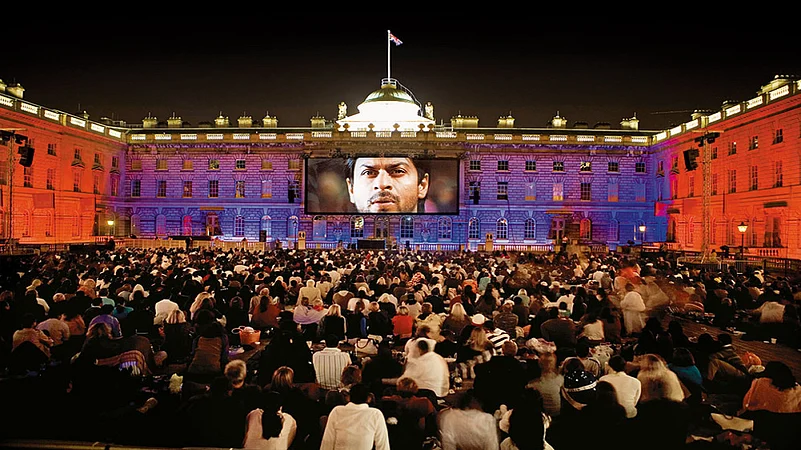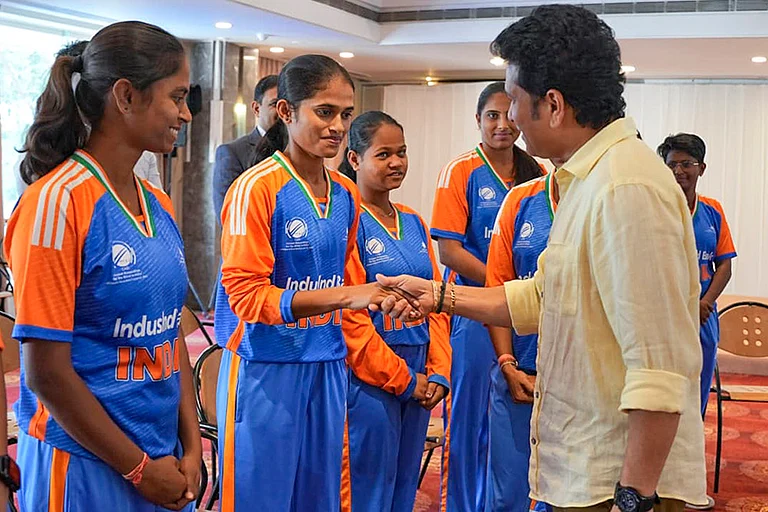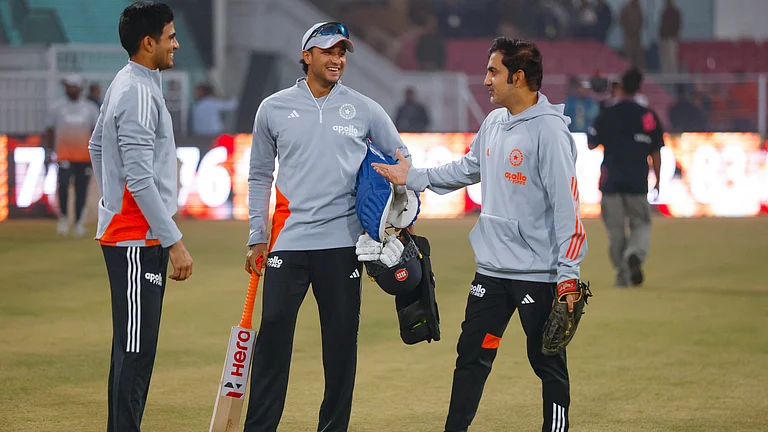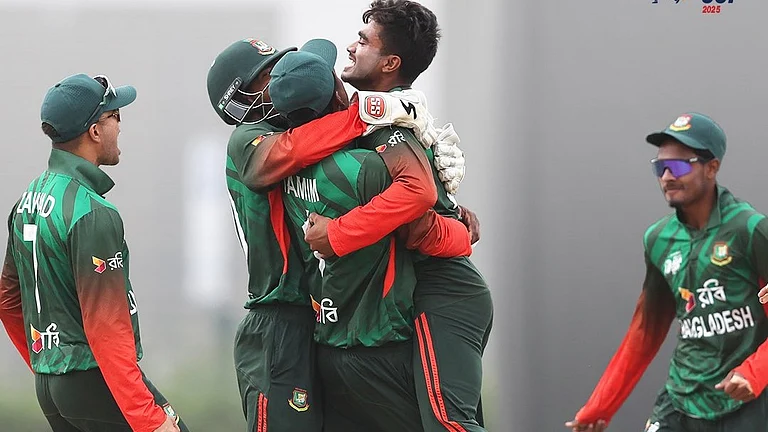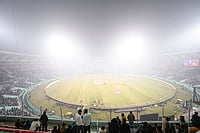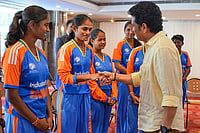Shah Rukh Khan (SRK) was the biggest star of a genre of Hindi cinema that can be called the diaspora romance film. This genre shaped a whole form of cinema called ‘Bollywood’, which began in the mid-1990s and has largely faded to resurface occasionally. Often filmed in overseas locations, it’s diasporic also in that it was often addressed to the Indian overseas film markets, particularly in the UK and later the US. SRK was the biggest star in this market: according to boxofficeindia.com (2012), he had starred in 11 of the Top 25 Overseas Grossers of All Time.
Among these 11 hits are five big-budget family romances closely associated with Karan Johar’s (KJo) Dharma Productions (with their ranking): My Name Is Khan, 2010 (2); Kabhi Alvida Na Kehna, 2006 (4); Kabhi Khushi Kabhie Gham, 2001 (11); Kuch Kuch Hota Hai, 1998 (20); and Kal Ho Na Ho, 2001 (23). These films share many striking features: they are set partially or wholly in an imaginary diaspora, usually in the UK or the US, yet in which the lead character, played by SRK, has his lifestyle and language marked as Indian rather than diasporic. These films are often linked by his name, Rahul or Raj, and his surnames that mark him as an ‘upper-caste’ Punjabi—Khanna, Malhotra—many of which have him living in or at least travelling to the diaspora.
The film that may be said to have started Bollywood was Dilwale Dulhania Le Jayenge in 1995. After this, the diaspora has played a key role in Indian cinema both as audiences and as characters that are no longer Hindi-speaking exiles, waiting to return to the motherland, but second generation, born and brought up in the West.
SRK plays Raj, a British Asian, but he does not attempt a British accent. Yet, when he follows Simran to Punjab where her extended family lives, he does not seem to have any family there. He seems to be totally separated from India. However, he is the one who knows what his duty is as an Indian, and that he has to be given his bride by her father in the ritual known as kanyadaan.
The success of the diasporic family genre suggests there is some underlying resonance these films have with audiences in India as well as overseas, which may allow exploration of the relationship between the diaspora, Indians and the notion of Indianness. These films also mark SRK’s emergence as the dominant hero of Bollywood and the most popular star in the diaspora.
A film that defines Bollywood is KJo’s Kabhi Khushi Kabhie Gham. It is inspired by Yash Chopra’s 1976 intergenerational family romance, Kabhi Kabhie, which it partly locates in a diasporic setting, with an emphasis on the parent-child relationship shown in its slogan, ‘It’s all about loving your parents.’
SRK’s role in Bollywood reached its peak in Kal Ho Na Ho. An unhappy, fractured, Indian family in New York prays for an angel and SRK arrives to mend their broken hearts, and teach them how to live again through talking, understanding, forgiveness and coming to terms with the failure of the father who committed suicide. Once the angel has united the diasporic family and created a new family for his beloved by getting her to marry her best friend, he dies.
Some of these films may be set overseas as they raise topics that would be problematic in India, such as Islamophobia in My Name Is Khan. Another reason may be that Indian modernity was seen as something shaped overseas and then imported to India. In the films we see the shaping of modern romance and indeed of the modern Indian family in the diaspora, which is really the central concern of these films.
All these films examine the problems of the Indian family, a narrative that has been explored throughout the history of Indian narrative, from the great epics to the television soaps. In KJo’s films, family problems are often to do with change, largely brought about by modernity and westernisation. So the diasporic Indian, who has been most exposed to these threats, seems an unlikely figure to save the Indian family. Yet, he is also removed from the pressures that affect the modern Indian elite by living a life of privilege, which it is hard to have in India without the old, poor India seeping through. The characters in these situations focus on the family and romance, yet they can still suffer as they seek to negotiate these relationships. Public life overseas is meaningless beyond garnering recognition for the self and for India.
SRK is the figure who makes the transition between India and the West, as well as between old and new India. This is seen most closely in Kal Ho Na Ho, where he is the Indian who comes to New York seeking treatment, but really to die. Self-sacrificing, loving and more than a little divine, this Indian angel unites broken families and couples, and even unites fractured American communities on the 4th of July. He represents the modern Indian, at home in India and the world—the cosmopolitan or truly global citizen.

Protesters blacken SRK’s face on a poster
SRK’s success in this role as the ultimate diasporic star can be attributed to many elements of his stardom beyond the film roles themselves, although he is such a consummate actor that it is hard to distinguish the two. These include his physical appearance, where his good looks, noted for his unruly hair, dimples and his quizzical eyebrow, fit an international standard of wiry energy. His striking resemblance to Dilip Kumar and his undeniable charm have marked him as an urban, indeed urbane, role model for Indian men. While looking more ‘Indian’ than some of the fairer stars, SRK could easily pass for a wide range of nationalities and has a very international image.
SRK’s high level of articulacy in English as well as Hindi/Urdu is striking. A modern Muslim, he may use Urdu and Islamic vocabulary, but this serves only to mark his cultural background. To sum up, he appears classless, ageless, international, and he has extraordinary charm. Creating a new image of the wealthy new Indian, he is admired for his uncompromising Indianness as well as for being comfortable with non-Indians—he appears as something of a chameleon. He is the one character who can promote himself, and, by extension, the whole Hindi film industry, as simultaneously Indian and global.
SRK represents the new India, with his rockstar chic, yet is able to perform Bollywood melodrama and dance with great aplomb, albeit with a knowing irony. He expresses emotions and romance in a way few Hollywood stars ever have to or could do, and creates a role model or object of desire. SRK prefers other roles, but it is as the emotional diasporic hero that he has been most popular.
It may well be that the charisma of a star is the ability of that person to embody and communicate emotions, and it is undeniable that SRK has a unique ability to communicate and charm. SRK represents the modern hero, an emotional man who, particularly in the family melodramas with KJo, expresses every nuance of his feelings throughout the film, and especially in song and dance. These films foreground the tender sentiments and pain that are not usually aired in public in the West, and certainly not by men, but they link the audience to Indian sentiments and emotional worlds where these are not only expressed but admired.

DDLJ cutout in Switzerland
SRK’s songs usually have a particular emotionality, from their plangent music to their picturisation. SRK is often shown feeling the emotionality by reacting to the music with his full body, stretching his hands in the air and gesturing expansively. They are songs of pain and love as well as some fun dance songs.
It is striking that in all these films SRK suffers from some form of disability or disadvantage, which means that although he remains good looking, he does not play a powerful male but a victim—widowed, rejected, ill, injured and disabled—where it is never his fault. He appears as a more ‘feminised’ male, emotional and not seeking—indeed, even having lost—alpha status. Rather, this pain shows him weeping, melancholic, suffering with threatened loss of status and respect. This pain is beyond his control, but he adds to his pain through his own self-sacrifice as he aims to redeem himself through suffering. SRK’s characters do not display the noble sentiments of Amitabh Bachchan’s star roles, but are inclined towards the more ‘feminine’ tender sentiments and quest for romance. SRK represents a modern Indian emotionality, appealing to his audience as a gentle, suffering person who responds with tears and only occasionally with anger—indeed, in many films, his emotions are opposed to those of Amitabh. It is perhaps a sign that emotions are valued differently by the new middle classes and the diaspora in their negotiation of new values in India and overseas.
Since the genre has faded, SRK has not played the diasporic hero with such popularity, but his stardom exceeds box office success. He represents the Hindi film industry itself as an articulate and clever star. He embodies the ‘new India’ in his success, glamour and international popularity. I can never find a western equivalent to him, but I am often reminded of Mick Jagger, a star from another industry whose popularity crosses many generations. In 1967, Jagger was arrested and sentenced for possession of cannabis. William Rees-Mogg, editor of the Times, a major establishment figure, wrote a leader using a line from Alexander Pope: “Who breaks a butterfly upon a wheel?” He argued Jagger had “received a more severe sentence than would have been thought proper for any purely anonymous young man”. Our stars are never above the law, but nor should they be crushed as if we are unable to bear their beauty.
(This appeared in the print edition as "The Pole Star Over Diasporic Horizons")
(Views are personal)
ALSO READ
Rachel Dwyer is Professor Emerita of Indian Cultures and Cinema at SoAS, University of London.






